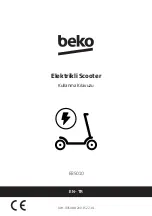
Basic Rider Optimization Training for the Segway
HT
Page 93 of 106
Instructor Guide and Participant Workbook
Rev 3.5i - January 2004
© Segway LLC 2002
P/N 1707100001aa
Summary
Review the following tips for a conducting a successful guided ride:
It is common for the rider to oscillate. If this happens, do the following:
>
Ask the rider to try to relax and concentrate on standing still, as you hold the Segway HT still.
>
Ask the rider to look ahead if s/he is looking down
>
Assess whether the Segway HT is pushing toward you or away:
o
Toward
you indicates that the rider is leaning too far forward, or that the rider’s feet
are too far forward. Have her shift weight, feet, or both backward.
o
Away
from you indicates the opposite. See above.
Emphasize that the rider controls the movement with his/her feet and body in relation to the point
where the tires touch the ground (contact patch).
Explain that “pitch oscillation” is common because the brain is not used to having something else
balance for them.
Encourage the rider to trust the Segway HT, and relax his/her hands, shoulders, arms and knees.
Check foot position and ensure that feet are placed in such a way that s/he can stand still. (Ideal foot
position depends on the rider’s body type, not necessarily on centering the foot. In some cases, the
rider’s feet may be positioned further forward or back, or even staggered on the Mat in order to
achieve “neutral” motion.)
Check rider posture – bent knees, relaxed shoulders, light hands, looking ahead.
Observe hands – instruct rider to use “light hands” or a “gentle grip.” A rider may begin turning the
Segway HT automatically as a result of his/her “tight grip” on the Steering Control. The Guide must
hold the Segway HT firmly so it doesn’t move forward or backward, and coach the rider to stop
turning by lightening her grip.
Remember, the overall goal of a guided ride is to provide a safe and enjoyable riding experience.














































